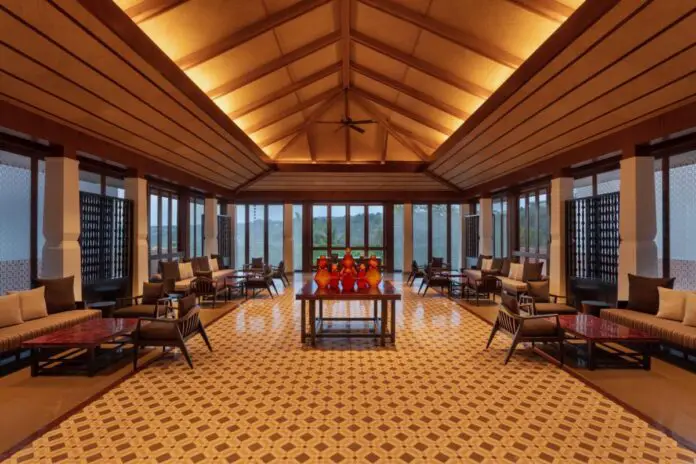India’s Hotel Market: A Shift Towards Chain-Affiliated Properties
India’s hotel market is undergoing a significant transformation, marked by a growing preference for chain-affiliated properties. This shift is largely driven by a thriving travel sector and an increasing demand for reliable accommodation options. As travelers seek consistency, safety, and standardized service, chain hotels are becoming the preferred choice for many.
The Rise of Chain-Affiliated Hotels
According to a recent Draft Red Herring Prospectus (DRHP) filed by Brigade Hotel Ventures, the trend towards brand-affiliated hotels is gaining momentum. As of June 2024, there are approximately 192,000 chain-affiliated rooms in India, a notable increase from a sector that was once dominated by small, independent establishments primarily in the midscale and budget segments. The demand for these chain hotels has surged dramatically, with daily room demand rising from 61,000 in 2015 to 116,000 by 2024.
The diversification of supply across various hotel segments is also noteworthy. Currently, 34.8% of available rooms fall within the luxury and upper-upscale tiers, 38.6% in upscale and upper-midscale, and 26.7% in midscale and economy categories, as reported by Horwath HTL India. This diversification reflects a broader range of options for travelers, catering to different preferences and budgets.
Growth Beyond Major Hubs
Historically, India’s hotel market has been concentrated in major urban hubs such as Mumbai, Delhi-NCR, Bengaluru, and Goa. However, this concentration is diminishing. The share of hotel supply in these key markets has decreased from 69% in 2015 to 59% in mid-2024, with projections suggesting it could drop further to 51% by 2028. This shift indicates a growing interest in secondary cities and emerging destinations, fueled by improved infrastructure and a burgeoning middle class eager to explore beyond traditional hotspots.
Emerging destinations, ranging from pilgrimage sites to scenic natural locales, are now attracting significant investment from hotel chains, broadening their geographic footprint and catering to a diverse array of travelers.
International Chains Strengthen Their Hold
The Indian hotel market is also witnessing a surge in international brands, which have captured nearly half of the chain-affiliated market in recent years. The market share of foreign hotel chains has increased from 21% in 2001 to approximately 48% today, and this trend is expected to continue until 2029. This growth underscores the strong presence of global brands alongside domestic players, who are also evolving to meet the rising expectations of Indian travelers seeking experiential stays and enhanced amenities.
Who’s Leading Hotel Ownership?
A significant transformation in the hotel ownership landscape has emerged, with private sector developers and institutional investors taking the lead over traditional hotel chains. In 2001, hotel chains owned 71% of rooms, but this figure has plummeted to just 26% as of 2024. This shift highlights the increasing role of private capital in the sector, with listed companies now owning 29% of all hotel rooms. This collaborative operating model allows hotel chains to focus on brand management while private owners concentrate on real estate investment, facilitating faster expansion and increased room supply.
Evolving Demographics and Demand Segments
Domestic tourism has rebounded sharply post-pandemic, with visits reaching 2.5 billion last year, surpassing pre-COVID figures of 2.3 billion. Factors such as urbanization, rising disposable incomes, and a median age of 27.6 years are driving leisure travel, with projections estimating 5 billion domestic visits by 2030, according to the Hotel Association of India’s (HAI) Vision 2047 report. Additionally, Indians are expected to spend $410 billion on tourism by 2030, as highlighted in a Booking.com-McKinsey report.
Foreign tourist arrivals (FTA) are also on the rise, with over 10 million visitors annually before the pandemic and 9.2 million in 2023. Projections suggest that FTAs could reach 30 million by 2037, driven by India’s growing appeal as a tourist destination. This dual growth in domestic and inbound tourism is creating a promising outlook for India’s hotel industry, particularly in the upper-tier and luxury segments, which are well-positioned to benefit from higher average daily rates (ADRs).
What are the Demand Drivers?
Business travel remains a core demand driver for hotels, bolstered by India’s booming IT, financial services, and manufacturing sectors. Additionally, experiential tourism, weddings, and leisure travel are gaining traction. The MICE (Meetings, Incentives, Conferences, and Exhibitions) segment also contributes significantly to revenue, particularly for upper-tier hotels equipped with function spaces.
Weddings and social events are particularly influential in driving demand, especially in upscale urban and destination hotels. The rise of destination weddings and corporate gatherings has added resilience to the sector, ensuring year-round demand.
Infrastructure expansion plays a pivotal role in driving hotel demand. India’s airport network now includes 153 airports, with 125 operational, while improvements in highway linkages, regional airport expansions, and rail networks like the Vande Bharat train services enhance accessibility. This infrastructure development is facilitating a broader distribution of hotel demand, with secondary cities and Tier 2 and 3 towns experiencing increased visitation and room occupancy.
Conclusion
India’s hotel market is on the cusp of a significant evolution, characterized by a shift towards chain-affiliated properties, a growing international presence, and a diversification of supply across various segments. As domestic and international tourism continues to flourish, the outlook for the hotel industry remains promising, with ample opportunities for growth and innovation in the years to come.

